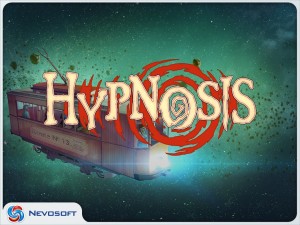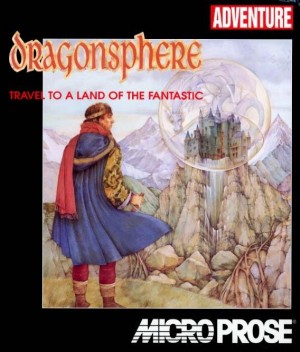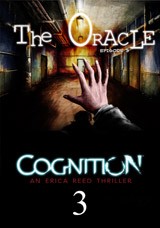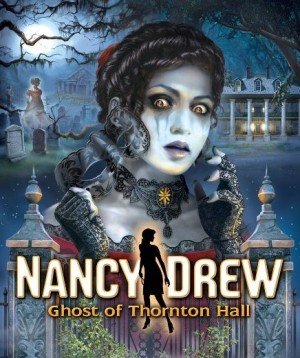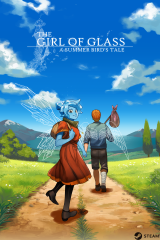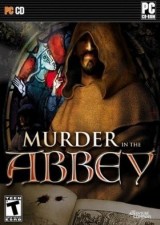Review for The Raven: Legacy of a Master Thief - Chapter One: The Eye of the Sphinx

I love a good mystery, so I was keen to pick up the latest title from KING Art Games, developer of 2011’s excellent The Book of Unwritten Tales. This time they’ve switched gears from medieval fantasy to a crime story set in the 1960s called The Raven: Legacy of a Master Thief. For now following a Swiss policeman across land and sea, the debut instalment of this three-part episodic title, The Eye of the Sphinx, offers a wonderfully absorbing story that’ll have you eager to play on by the time it finishes. With intriguing characters, standout voice work and a beautiful soundtrack, The Raven flutters somewhat due to mixed animation and an assortment of technical issues, but don’t let that put you off from experiencing this engaging point-and-click whodunit/heist adventure.
The titular Raven is a notorious thief who spent the 1950s stealing from every bank and museum with a prize worthy of his attention. The police couldn’t catch him, only ever finding the black feather that he’d leave at the crime scene as his calling card. The thief came to be famous in the media, but another man eventually joined him on that podium: Nicolas Legrand, the French inspector who finally shot and killed and the burglar... Or did he?
In 1963, one of the eponymous Eyes of the Sphinx, a pair of valuable jewels, is stolen from a British museum and the Raven – or someone emulating him – is behind it. The other gem is due to be displayed soon in Egypt, and is being transported there by train from Zurich to Venice, and then by boat to Cairo. Players take on the role of Constable Anton Zellner, a Swiss policeman bored of his usual beat and determined to prove himself capable of bigger things, who is tasked with guarding the Eye while aboard the famed Orient Express. Inspector Legrand is also present, waiting in ambush in an attempt to trap the ‘new’ Raven.
Zellner is a man who, on initial viewing, doesn’t fit the bill of a typical protagonist. He’s getting on a bit: losing his hair and slightly chubby, he is no doubt approaching retirement age. He’s certainly not as healthy as he once was, but his refusal to take his medicine speaks volumes for the type of man he is, and for what he lacks in stereotypical rugged good looks, Zellner makes up for in heart. With a curly, grey moustache perched above his lip, Zellner is a man with good intentions. He’s kind, polite and friendly, but firm in the decisions he makes and with a wit of cutting sarcasm.
Legrand is at first reluctant to let Zellner join the investigation. With stern eyes that peer out behind his circular spectacles, the Inspector is strict and composed, but utterly filled with self-doubt. His reputation has been built on that fact that it was he who killed the Raven, but this new robbery casts everything into question. Legrand is convinced that the famous thief has returned, while Zellner thinks otherwise. The two characters are opposing in both viewpoint and personality, and seeing them interact with each other is particularly compelling.
While on the train you’ll be introduced to some other cast members. Matt is a chirpy, slightly mischievous boy that Zellner takes a fondness to. His mother is also on board, accompanying Lady Clarissa Westmacott, a successful mystery novelist (and one of many clever nods to Agatha Christie). While the former seems on edge, the latter is perfectly happy to just soak in her surroundings at ease. While sometimes the supporting characterisation can edge too close to cliché for comfort, the cast are all genuinely interesting. After a brief conversation with everyone, I was already building up an image in my mind of their backgrounds and the type of people they are. Only in one instance did I feel underwhelmed by a character’s involvement. Barely any time is spent with a stuck-up, self-entitled young woman who joins you on the ship, but presumably she’ll be fleshed out in the later episodes.
A lot of your time will be spent talking to others on the journey. That’s not to say there’s an overwhelming amount of dialogue (there isn’t), but gradually uncovering more about the characters, their personalities and backstories is as vital to progression as puzzle solving is. This is one of the great joys of playing The Raven. From the outset there’ll be those who seem to be acting strangely. Take the young musician who has issue with you wanting to look inside his violin case – does he have something to hide, or is he just uptight? There are no ‘good’ and ‘bad’ characters because there are oddities about everyone you encounter, some more overt than others. They’re just human, after all.
It helps that the pacing is spot on. As you progress with your detective work, you’re slowly piecing together clues. This is a game of two halves: the former is spent on the train, the latter on the boat. While aboard the Orient Express you’ll need to help a professor get back into his locked cabin and try to recover a baroness’s purse. However, circumstances soon ramp up as the train screeches to a halt and all the cabins are plunged into darkness – and it only gets worse from there. It’s your task to create a light source and then rescue Matt from impending doom. Things settle down on the ship, but it doesn’t take long before the most dramatic event of the episode happens. Another crime is committed, creating a whole load of questions: chiefly, whodunit? Just when it seems that things have calmed for a moment, something will happen or evidence will be uncovered that will keep you wanting to play on. It’s rare these days that I want to continually keep going without stopping, but I felt that pull with The Raven. I was as hungry for the truth as Zellner.
When you’re not talking to others, you’re solving puzzles, but these obstacles are all firmly grounded in reality. If Zellner picks up an axe, for instance, he won’t put it in any magical bottomless pockets, but instead carry it by his side. He’ll also, for the most part, not pick up things without good reason. Along the way you’ll need to figure out how to get rid of a guard, enter a burning area safely and escape capture. The majority of solutions involve using your surroundings and inventory in traditional adventure style. It’s always fairly straightforward what you need to do (although not blindingly obvious), but getting bogged down with overly complicated puzzles probably would have messed with the story beats. Those looking for difficult brainteasers won’t find them here, but I can’t say I found it an issue.
There are a few instances of varying gameplay to offer a refreshing change. For example, there’s a minigame that you play against Matt in order to win something of his. The game involves sliding pucks along the floor toward a scoring grid. It has a simple control scheme, clicking and dragging in order to designate direction and power, that should prove easy to pick up for everyone. There’s another occasion where you have to use your mouse to drag a wire into shape in order to pick a lock. Again, nothing overly complicated, but these different types of puzzles help keep things interesting.
One of the standout features of The Raven is the fantastic localisation. Considering the game was written and developed in Germany, it’s laudable that the translation is so impressive, and the voice acting is excellent across the board, without a single loose link. Everyone is perfectly cast and have proper accents to match. From an uncooperative English police officer to the upbeat ship captain, everyone sounds real and authentic. I’m unfamiliar with Swiss accents, so I’m not sure if it’ll be up to scratch for locals, but Zellner’s soothing tones sounded convincing to me. Particular notice also has to be given to young Matt, since decent child voice acting is so rare in video games.
Another brilliant audio aspect is the music. It was one of the first things I noticed when I started playing. The grand orchestral tracks that play are very reminiscent of John Williams scores. As soon as the soundtrack kicked in at the end of the opening cutscene I felt a sense of excitement. The strings that compose the main theme are simultaneously haunting and thrilling. It felt so evocative of adventure, so rich with wonder, and I hadn’t even played anything yet. Later pieces keep the tone light, with brass instruments making the gameplay feel jaunty. Although the escapades of Zellner are ostensibly dangerous, they’re never overly threatening, which is thanks, in part, to the music. Nevertheless, it’s entirely capable of ramping up suspense, mystery and thrills when appropriate. It’s a testament to how far a good soundtrack can go.
The Raven is technically proficient graphically, but doesn’t serve up a particularly noteworthy art style. The 3D environments are all crisp and well detailed, and each character is very distinct from one another. The use of lighting and shadows is particularly impressive. The outside decks of the boat, for example, have sun shining through the rooms, the only shadows coming from the door and window frames. These areas feel airy and create a real sense of openness. Contrast that to the ship’s hold, where the only light comes from a few overly bright lamps. It’s metallic, cluttered and feels dingy. Real work has been paid to the various atmospheres, and it pays off.
The animation is a mixed bag, however. Background elements like the mountains whizzing past through the train windows or the boat chopping through the sea are well done. So too are character animations, gesturing and moving around even when you’re not interacting with them. Their faces, on the other hand, are sometimes a bit lifeless. Probably the biggest issue is their eyes, which often appear vacant. Some of the more action-oriented scenes also feel cheaply presented. Instead of fully animating such sequences, the game will just fade to black and then pick up again shortly after. It’s a bit of a cop out that you don’t get to properly witness some exciting moments.
While the first episode confines you to the train, a wharf and the boat, there are still lots of locations to explore. Sometimes, though, there does seem to be a sense of restraint. On the train Matt will disappear for a bit and can’t be found anywhere, only to reappear again when he’s needed for the story. The ship also supposedly holds a lot of passengers, but you’re never able to access or even approach the majority of their cabins. It’s a bit of a shame and would have helped the world feel that little bit more alive. Still, all things considered you get to explore a decent number of environments. There’s Legrand’s room, a messy abode that show signs of a restless man; the train's lounge, a luxurious and well-furnished space; and the ship’s medical centre, a clinical and cold atmosphere that looks the part. There’s a good diversity in the decors despite spending most of the time on two modes of transport.
The interface is standard for a point-and-click adventure. You use the left mouse button to interact, clicking to move Zellner or perform an action on a hotspot. If an option has been exhausted or just isn’t possible, then the cursor will signify the area is inaccessible. For example, if you’ve heard everything Zellner has to say about a particular object then it’ll no longer show as an interactive hotspot. The inventory is brought up by hovering your mouse at the bottom of the screen. There are times when this can get in the way of where you’re trying to click on the floor, which is briefly frustrating. Another issue that you might run into is that it isn’t always clear where you need to click to change between fixed camera angles (since the game does this automatically) or move to the next room. A small icon signifying this would have been a welcome addition. I also found that Zellner took a split second too long to react to my clicks. You’ll get used to it, but it doesn’t feel totally smooth at first.
There is also a hint system built in. You can read Zellner’s notebook at any point, which provides a summary of what you’ve found out so far, what he thinks about each character and what your current aims are. It’s a helpful feature, especially for those who won’t be playing in one long sitting. Pressing the spacebar highlights all hotspots in the environment, but performing this action will use up what are referred to as "adventure points". These are awarded every time you make a big step forward in the case, and you always have such a high number of points that the ten deducted for each highlight isn’t an issue at all.
Disappointingly, the game is plagued with various technical problems. Sometimes there can be pathfinding issues, where you’ll click something right next to Zellner but he’ll still awkwardly reposition himself, while at one point he just warped across the screen. Other problems include subtitles not matching what’s being spoken (usually just a word or two altered, but there are occasions where whole lines had been changed) and the sea's texture being missing at times. There aren’t any game-breaking issues and they're all minor on their own, but they add up and are things that could and should have been fixed before launch.
Considering this is an episodic title, the 6-7 hours of gameplay so far seems like a perfect amount. There are times when you'll think the game is coming to a close, yet pleasingly it will keep on going. However, when the game does end it’s extremely sudden. It finishes on a cliffhanger and a dramatic moment, but it happens really quickly. There’s no notice or build-up, and before you can take in what’s happening you’re watching the credits. This game wasn’t originally planned as an episodic series, which undoubtedly explains why the ending feels so hasty. Although it leaves you wanting more, the finale isn't satisfyingly played out in its own right.
It’s going to be interesting to see where The Raven goes from here, particularly as the series promises to show events from the thief's perspective as well. This first episode has laid down an impressively paced story with a memorable set of characters, so hopefully the excitement continues to build in the following two episodes. Pair the gripping plot with superb audio production and sensible, logical puzzles, and you've got a great opening chapter. Although tainted slightly by some minor animation and technical issues, as well as a slapdash ending, these issues are easy to overlook when everything else is just fundamentally fun. I’ll be anticipating the continuation of this promising adventure with bated breath until it arrives next month.
Since time of writing, this game has been re-released in a graphically-enhanced "Remastered" edition. This review deals only with the original release.












